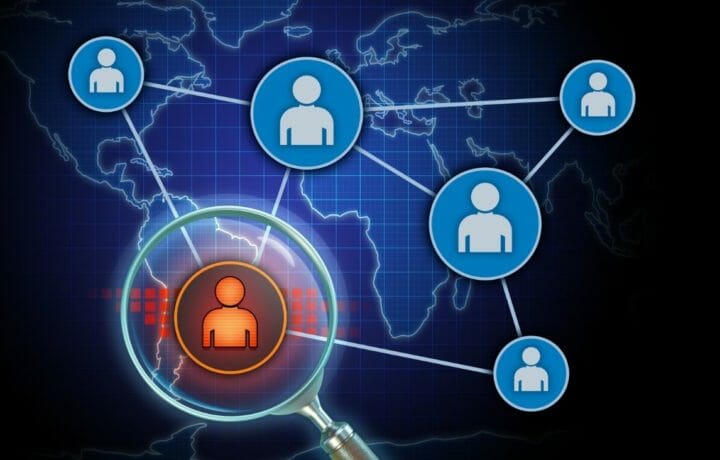In defense and intelligence agencies, as well as the defense industrial base (DIB), insider threat mitigation has historically focused on individual analyses. While these targeted assessments have proven effective within these sectors, they may present challenges among contemporary technology innovators that prioritize creativity and openness. But in today’s innovation-focused tech giants like Meta, Microsoft, and Google, this approach can feel invasive, raising legal and privacy issues while potentially repelling top talent.
Insider threat and counterintelligence experts, often from a defense background, grapple with a tough mission: evolving insider threat programs in innovative tech firms without undermining their core values or top talent allure. It’s a complex task—crafting security measures that guard against threats while preserving the creativity, openness, and agility that define industry giants like Meta, Microsoft, and Google.
A new concept replaces individual analysis with aggregate analysis, offering an innovative alternative.
Bridging Cultural Gaps
Drawing from a rich background in military and intelligence communities, where the primary mission revolves around security and defense, the shift toward innovative technology companies presents a unique challenge. The goal is to foster ease of access to resources and information sharing. To do so without turning away top talent with perceived draconian security measures requires a different approach to insider threat analysis—one that respects the culture of openness and creativity.
The Critical-Path Method to Evaluate Insider Risks
Historically, insider threat analysis in traditional defense sectors has relied on the critical-path method, with its buckets of threat indicators (personal predisposition, stressors, concerning behavior, and problematic organizational response). While effective, this approach calls for mass collection and analysis of various signals—not just cybersecurity-related but encompassing all kinds of individual employee behaviors. The challenge within contemporary tech companies lies in balancing the need for security with concerns over privacy and trust. Convincing stakeholders that this information would be used only to assess risks and inform preventative strategies, not used against individual employees, can be a tough sell.
Rethinking the Critical Pathway
In rethinking the critical pathway, we should ask ourselves whether individual identity is truly necessary in identifying risk. Could working inward from larger organizational trends instead of backward from individuals be the solution? This alternative approach analyzes population groups, teams, or sites for insider risk, aligning the security measures with the innovative and open culture of the leading tech companies. By focusing on aggregate analysis, we maintain the critical aspects of risk assessment without hindering the creativity and appeal tech innovators.
Advantages of Aggregate Analysis Over Individual Analysis
The transition towards aggregate analysis from the individual-based approach offers several advantages that align with the values and operational style of contemporary tech companies. Here’s how:
1. Aligning Resources to Larger Trends
Rather than pinpointing specific individuals, aggregate analysis focuses on broader organizational and team-level trends. This allows for more strategic allocation of resources, ensuring that areas with higher risks patterns receive the attention and support they need. For example, an area with high cybersecurity violations and high rates of HR incidents might be allocated more training and technical support to reduce insider risk.
2. Prioritizing Hiring and Leadership Efforts in High-Risk Areas
Through recognizing patterns and risk factors, aggregate analysis perhaps helps organizations to prioritize hiring and leadership efforts where they are most needed, thus reducing potential stressors. If one site scores higher for insider risk due to manpower shortages (stressors) and a high rate of physical security incidents (concerning behavior), this approach can guide the organization in prioritizing hiring at that location, or perhaps suggesting that the next public appearance for the organizational head is to that high-risk location to boost morale, thus reducing insider risk and enhancing prevention.
3. Balancing Individual Privacy with Broader Risk Understanding and Compliance
By focusing on larger trends rather than individuals, aggregate analysis respects privacy concerns while still maintaining a strong understanding of risks. The concerns related to collecting troves of personal information can be avoided, allowing for a more trusting relationship between the organization and its employees. Furthermore, this method’s broader approach is more likely to align with legal and privacy guidelines, especially in industries where individual information handling is highly sensitive. By working closely with legal and privacy teams, organizations can ensure that their methods are in full compliance, enhancing trust and cooperation across the board.
a strategic realignment
Many seasoned security and intelligence professionals are now working in new industries where the paradigms for security and insider threat prevention must evolve. The traditional focus on individual analysis, while effective in more rigid defense contexts, can conflict with the culture of creativity, openness, and agility that defines companies like Meta, Microsoft, Google, and others. The shift towards aggregate analysis is a strategic realignment. By embracing a holistic approach that considers larger trends, population groups, and teams, organizations can proactively identify and mitigate risks without stifling the very attributes that fuel innovation. This method balances privacy and legal considerations, fostering a trusting environment that aligns with modern values.
The challenge of implementing this new approach is significant, but the rewards are profound: a more nuanced, flexible, and effective framework for insider threat prevention that resonates with the ethos of the world’s leading tech companies. The future of security lies in understanding that protecting assets doesn’t have to mean compromising the innovative spirit—it’s about crafting solutions that are as inventive and forward-thinking as the industries they safeguard.




